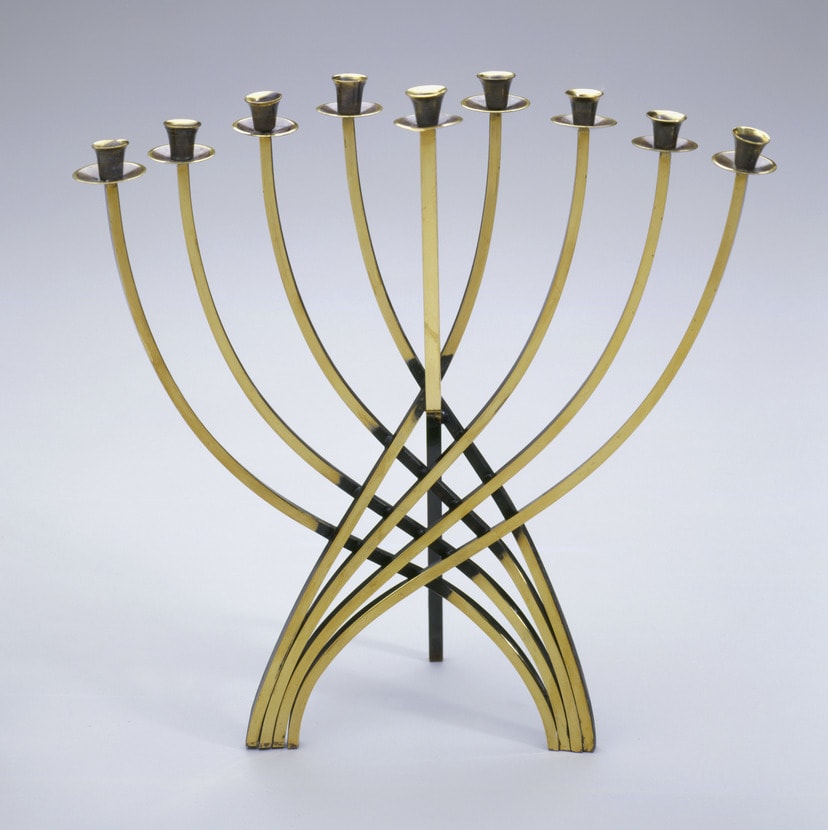
- Object Name:
- Hanukkah Lamp
- Artist/Maker:
- Ludwig Yehuda Wolpert
- Bio:
- b. 1900, Hildesheim, Germany; d. 1981, New York; active in Israel and the United States
- Place Made:
- New York, New York, United States
- Date:
- 1958
- Medium:
- Copper alloy: hand-worked
- Dimensions:
- 11 1/8 × 11 1/8 × 3 7/8 in. (28.3 × 28.3 × 9.8 cm)
- Credit Line:
- Gift of the Tobe Pascher Foundation
- Accession Number:
- JM 51-58
On View
Wolpert’s artistic career began with private sculpture instruction and a program of study at the School of Arts and Crafts in Frankfurt, Germany. In 1925, he embarked on a three-year study of metalsmithing, which he then used to develop designs for Jewish ceremonial objects. By 1931, he had succeeded in combining his training and interests in the creation of a remarkable silver-and-ebony seder plate, that was first exhibited at the Berlin Museum of Arts and Crafts. The work was a radical step for ceremonial art as it employed a geometric functionalist style associated with the Bauhaus and modernism. It marked a turning point for Judaica. Wolpert’s approach to his work was straightforward; the surface was kept plain so that the decoration did not overwhelm the object or detract from the beauty of the metal. The artist used conventional fabrication techniques to shape, pierce, and overlay his works. Elegantly proportioned and uncluttered, his work exudes a sense of the sacred and mystical, a quality that is palpable even to those unfamiliar with Jewish rituals or Judaica. Part of the remarkable “inner content” that the artist strived for in his work came from his encyclopedic and intimate familiarity with Jewish literature, history, liturgy, and symbolism.
Information may change as a result of ongoing research.